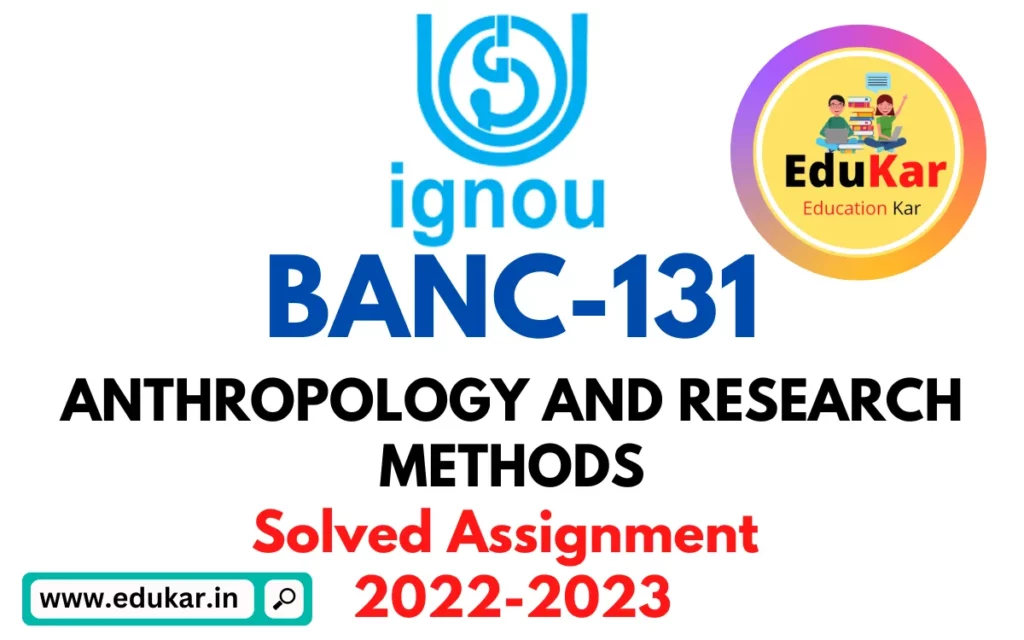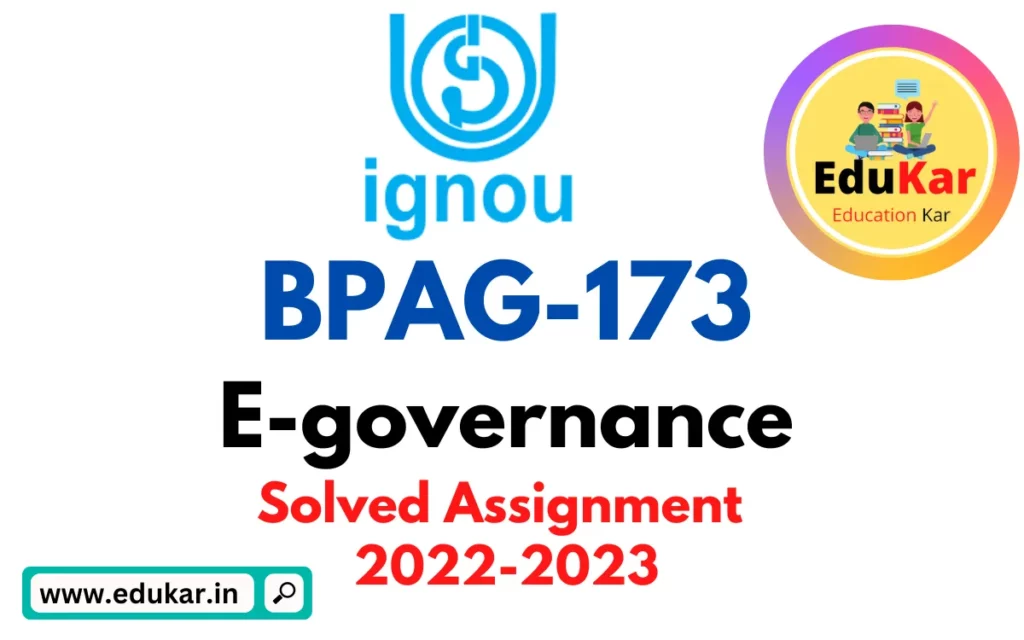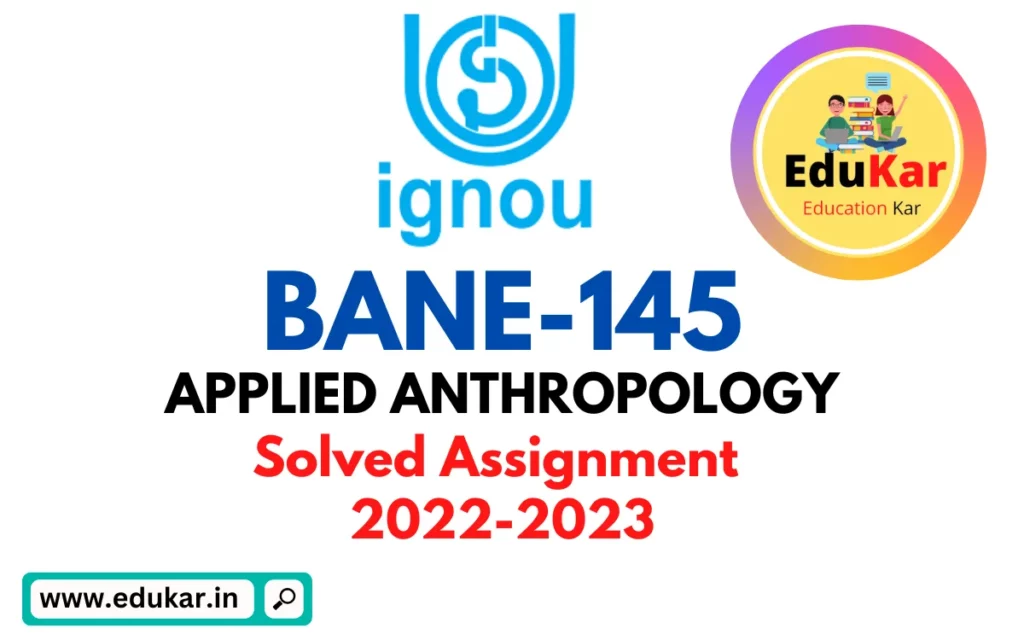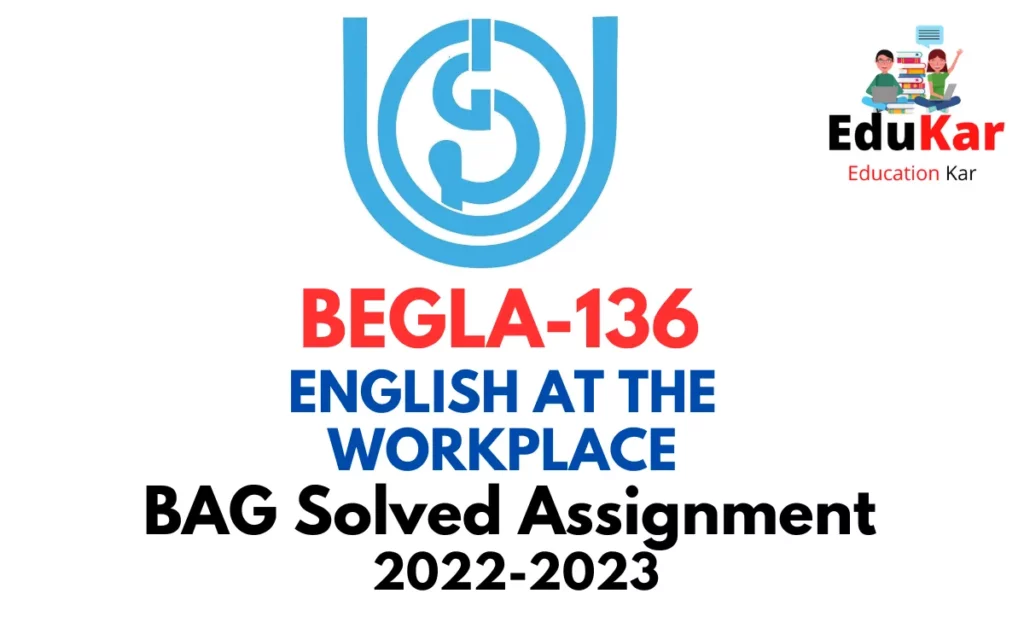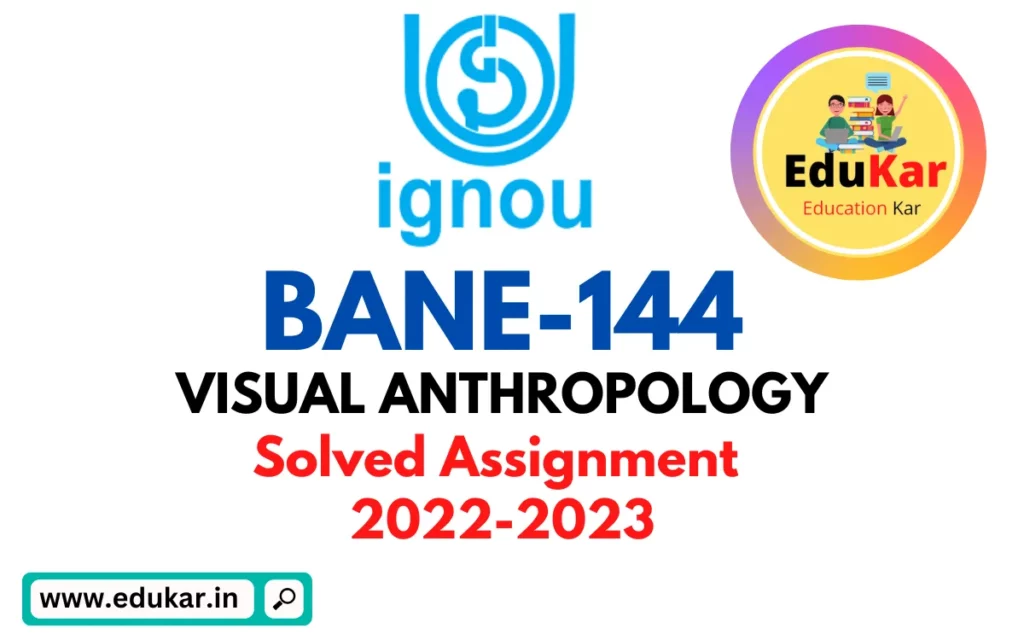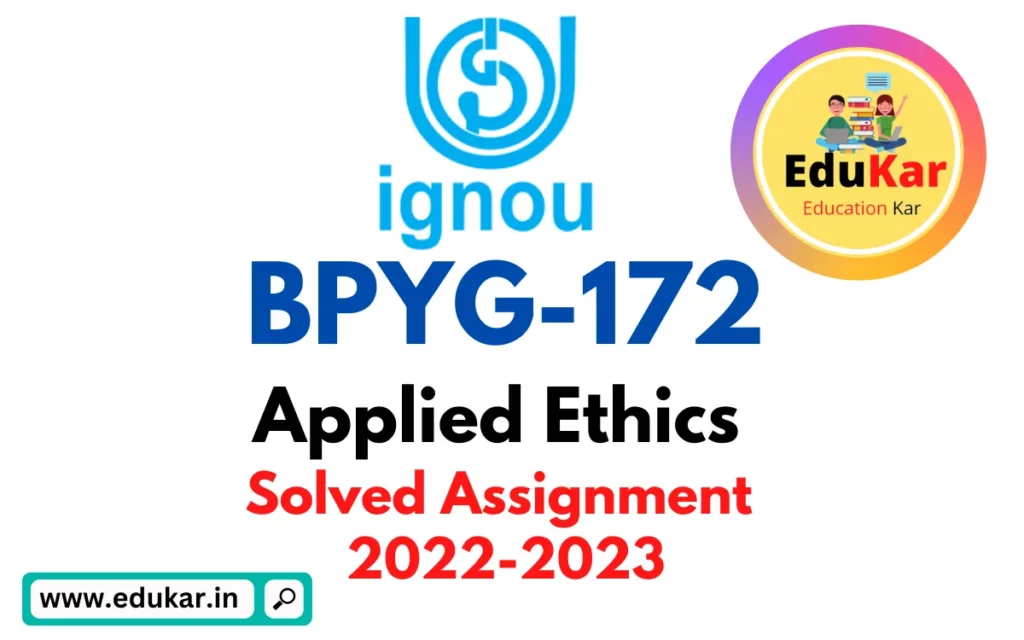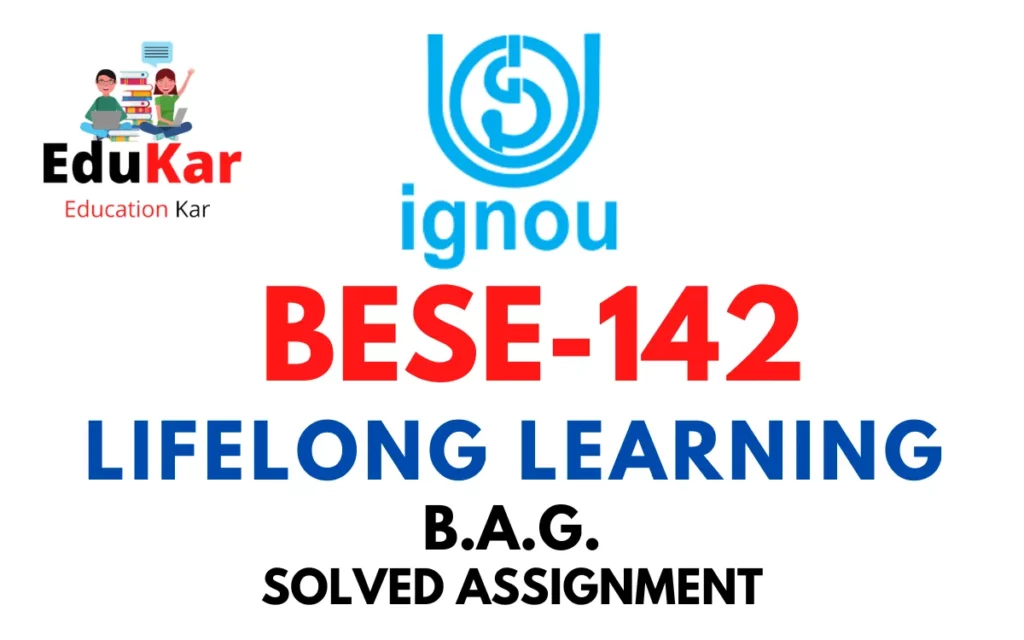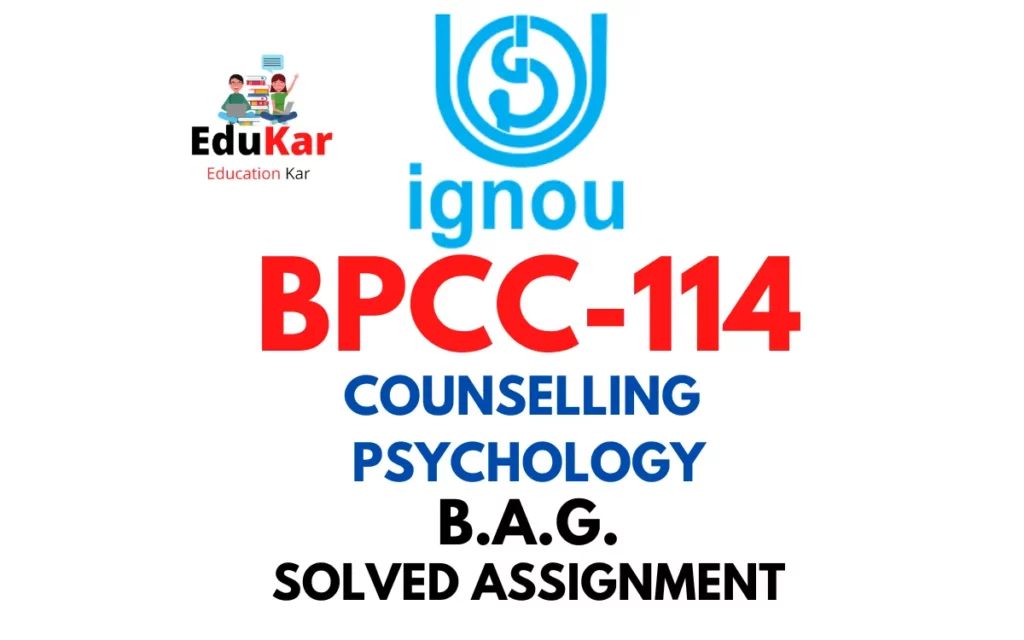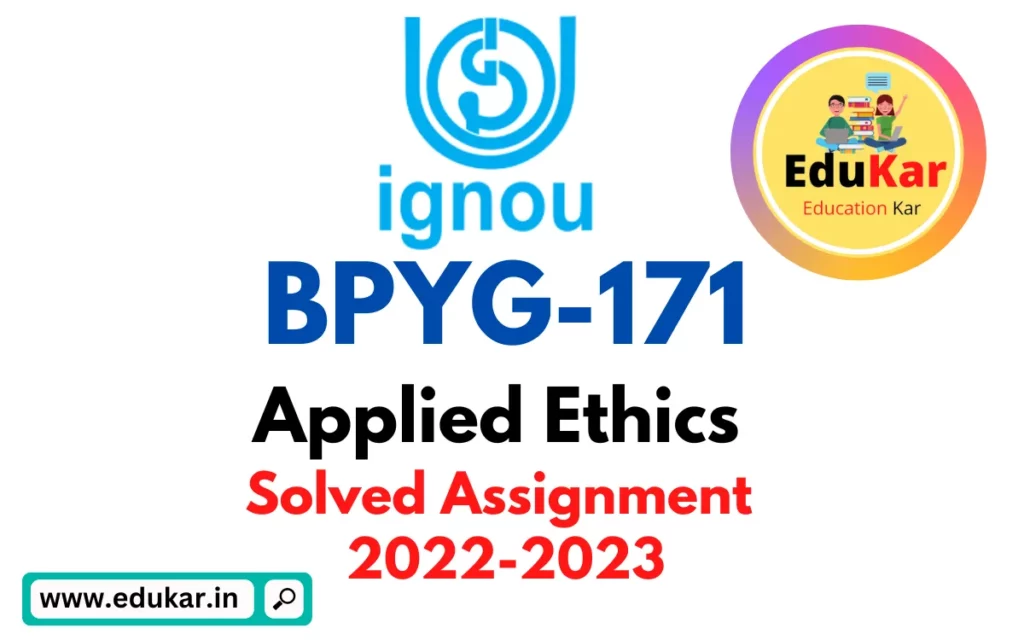Contents
- 1 Assignment A
- 2 Answer the following in about 500 words each.
- 3 1. Define vulnerability and various factors that cause it.
- 4 2. Briefly discuss the relationship between disaster and development.
- 5 Assignment B
- 6 Answer the following in about 250 words each.
- 7 3. Write a note on the National Policy on Disaster Management, 2009 and National Disaster Management Plan, 2016.
- 8 4. List out the statutory provisions for mainstreaming disaster risk reduction.
- 9 5. Examine the case study of ‘The Indian Ocean Tsunami, 2004.’
- 10 Assignment C
- 11 Answer the following in about 100 words each.
- 12 6. What do you mean by epidemics?
- 13 7. Discuss the key components of disaster preparedness framework.
- 14 8. Comment on the concept of social and economic rehabilitation.
- 15 9. Write a note on the types of traditional knowledge.
- 16 10. List out the principles of community based disaster management.
Welcome to the complete solution guide for IGNOU BPAG-171 Solved Assignment 2022-2023. This assignment will provide you with comprehensive answers to all the questions in the course material, helping you to score better grades and gain a deeper understanding of the subject. Whether you are a student enrolled in the program or just looking to improve your knowledge, this resource is perfect for you.
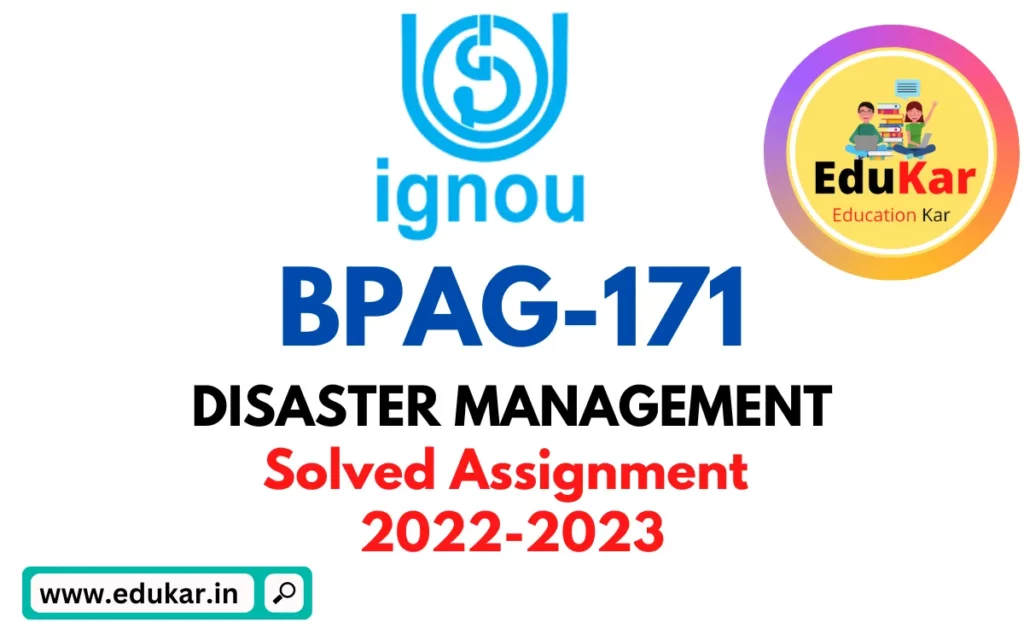
| Title | IGNOU: BPAG-171 Solved Assignment 2022-2023 (DISASTER MANAGEMENT) |
| University | IGNOU |
| Degree | Bachelor Degree Programme |
| Course Code | BPAG-171 |
| Course Name | DISASTER MANAGEMENT |
| Programme Name | Bachelor of Arts (General) |
| Programme Code | BAG |
| Total Marks | 100 |
| Year | 2022-2023 |
| Language | English |
| Assignment Code | ASST/TMA/July 2022 & January 2023 |
| Last Date for Submission of Assignment: | For June Examination: 31st March For December Examination: 30th September |
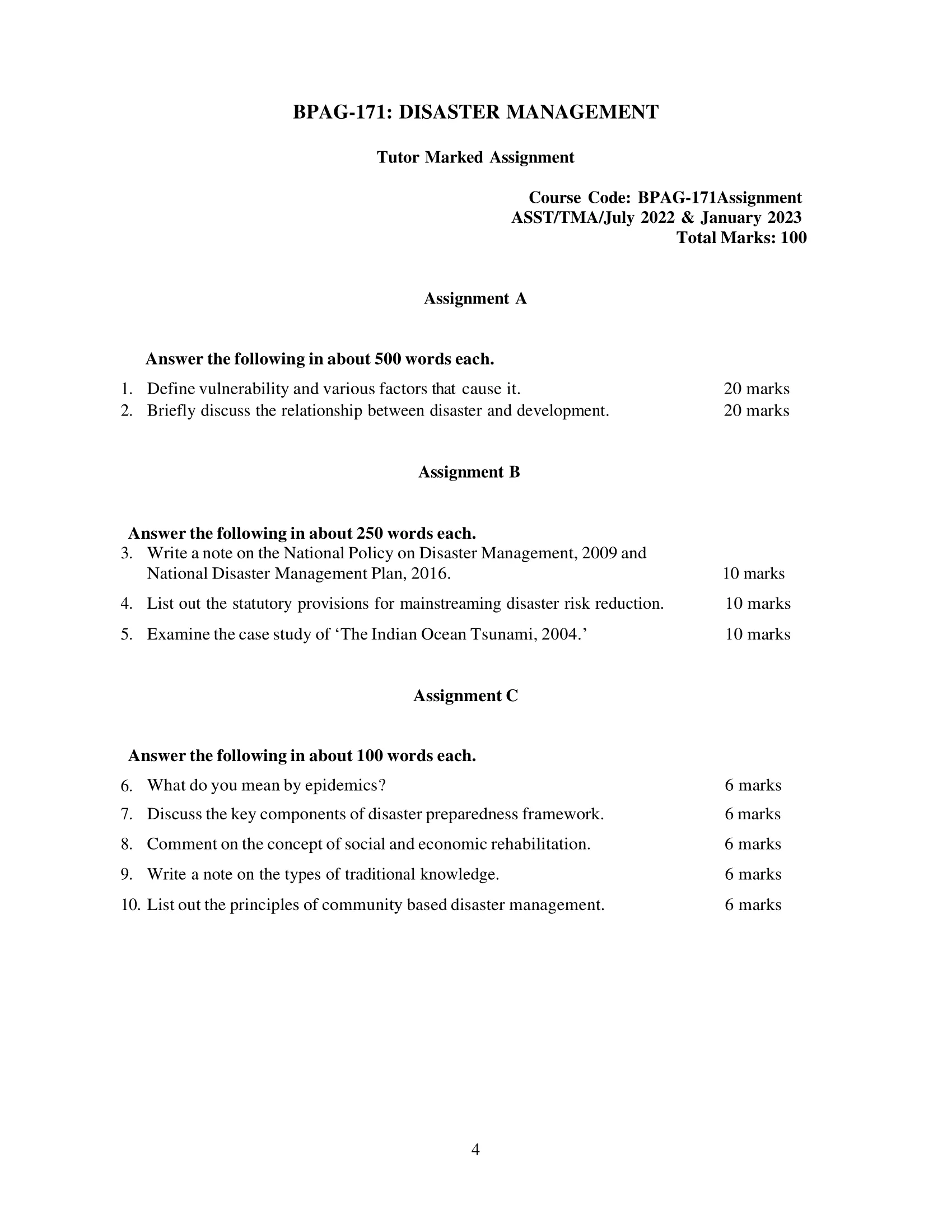
Assignment A
Answer the following in about 500 words each.
1. Define vulnerability and various factors that cause it.
Ans: Vulnerability refers to the susceptibility or exposure to harm or damage. It can refer to physical, emotional, or psychological weaknesses, as well as to gaps or flaws in systems, processes, or structures that can be exploited or attacked. Vulnerability can arise from a variety of factors, including but not limited to:
- Physical or mental health conditions: Physical or mental illnesses or disabilities can leave a person vulnerable to harm, neglect, or abuse.
- Poverty or financial insecurity: People who struggle to make ends meet or who live in poverty are often more vulnerable to exploitation, crime, or other forms of harm.
- Social or cultural factors: Vulnerability can also result from social or cultural factors such as race, ethnicity, gender, sexual orientation, or religion, which can make a person more susceptible to discrimination, prejudice, or violence.
- Age: Older adults, children, and the elderly are often seen as more vulnerable due to declining physical or mental abilities, social isolation, or limited access to resources.
- Geography: People living in certain geographic areas, such as natural disaster zones or conflict-prone regions, are often more vulnerable to harm or displacement.
- Political or economic instability: Political or economic instability can also increase vulnerability, especially for marginalized or minority populations.
- Technology: As technology becomes increasingly central to our daily lives, so too does the potential for cyber attacks, data breaches, and other forms of technological vulnerability.
- Environmental factors: Environmental factors such as climate change or pollution can increase vulnerability by affecting access to resources, health, and well-being.
- Personal choices or circumstances: Personal choices or circumstances, such as substance abuse or involvement in criminal activities, can also increase vulnerability.
It is important to note that vulnerability is often interrelated and can compound over time. For example, a person living in poverty may be more vulnerable to health problems, which in turn can increase their vulnerability to exploitation or abuse.
2. Briefly discuss the relationship between disaster and development.
Ans: Disaster and development are two concepts that are closely intertwined, with one often having a significant impact on the other. In many cases, disasters can have a devastating effect on development efforts, reversing gains made and setting back progress. On the other hand, disaster risk reduction and resilience can be considered a key component of sustainable development.
Disasters have both direct and indirect impacts on development. Direct impacts include physical destruction of infrastructure, loss of lives, and disruption of economic activities. Indirect impacts can be just as severe, including the displacement of populations, loss of livelihoods, and long-term economic and social disruption. These impacts can have a ripple effect, undermining years of development work and leaving communities vulnerable to future disasters.
However, disasters can also present opportunities for development. For instance, the aftermath of a disaster can provide a unique window of opportunity to build back better and stronger, incorporating disaster risk reduction measures into development planning and implementation. This not only helps reduce the risk of future disasters, but also contributes to sustainable development.
Incorporating disaster risk reduction into development planning is critical for ensuring that development is sustainable and resilient. This includes investing in infrastructure and services that are resilient to disaster, building the capacities of communities and governments to prepare for and respond to disasters, and strengthening governance and institutions to better manage disaster risk.
Another important aspect of the relationship between disaster and development is the role of aid and financing. Aid and financing can play a critical role in supporting disaster-affected communities, but they can also have unintended consequences, such as hindering local ownership and sustainability. As such, it is important to ensure that aid and financing are aligned with local development goals and strategies, and that they support local capacities and institutions.
Assignment B
Answer the following in about 250 words each.
3. Write a note on the National Policy on Disaster Management, 2009 and National Disaster Management Plan, 2016.
Ans: The National Policy on Disaster Management, 2009 and the National Disaster Management Plan, 2016 are two important documents that outline India’s approach to disaster management.
The National Policy on Disaster Management, 2009 provides a comprehensive framework for disaster management in India, encompassing the full spectrum of activities from preparedness and risk reduction to response, relief, and recovery. The policy recognizes the importance of community-based disaster risk management, strengthens the role of the government in disaster management, and encourages multi-stakeholder partnerships and collaboration.
The National Disaster Management Plan, 2016, on the other hand, provides a detailed plan of action for disaster management in India, covering all phases of the disaster management cycle, including preparedness, response, and recovery. The plan is based on the principles of risk reduction, preparedness, response, and recovery, and is intended to serve as a blueprint for action at all levels of government, including local, state, and national.
Both the National Policy on Disaster Management, 2009 and the National Disaster Management Plan, 2016 play an important role in guiding and directing disaster management efforts in India. They provide a comprehensive framework for disaster management and help to ensure that disaster management efforts are effective, efficient, and consistent across the country.
4. List out the statutory provisions for mainstreaming disaster risk reduction.
Ans: There are several statutory provisions for mainstreaming disaster risk reduction (DRR) into development planning and implementation, including:
- The Disaster Management Act, 2005: This act provides the legal framework for disaster management in India, including provisions for DRR, emergency response, and recovery efforts. The act establishes the National Disaster Management Authority and State Disaster Management Authorities, which are responsible for implementing DRR policies and programs.
- National Disaster Management Plan, 2016: The National Disaster Management Plan outlines India’s approach to DRR and provides a comprehensive plan of action for disaster management, covering all phases of the disaster management cycle, including preparedness, response, and recovery.
- National Building Code, 2016: This code provides guidelines for the construction of buildings and infrastructure, including provisions for ensuring that they are disaster-resistant and resilient.
- Environmental Impact Assessment Notification, 1994: This notification requires that all development projects undergo an environmental impact assessment, including a risk assessment for disasters, and that mitigation measures be incorporated into the project design.
- National Land Use Policy, 2011: This policy provides guidelines for the sustainable use of land, including provisions for reducing disaster risk and incorporating DRR into land-use planning and decision-making.
- National Water Policy, 2012: This policy provides guidelines for the sustainable use of water resources, including provisions for reducing disaster risk and incorporating DRR into water-resource management.
- National Forest Policy, 1988: This policy provides guidelines for the sustainable management of forests, including provisions for reducing disaster risk and incorporating DRR into forest management and conservation.
These statutory provisions for DRR help to ensure that disaster risk is considered in all phases of development planning and implementation, from project design to implementation and monitoring. They are critical for reducing the risk of disasters and ensuring that development efforts are sustainable and resilient.
5. Examine the case study of ‘The Indian Ocean Tsunami, 2004.’
Ans: The Indian Ocean Tsunami of 2004 is a powerful case study of the devastating impact that natural disasters can have on communities and the importance of disaster risk reduction (DRR) measures. On December 26, 2004, a massive earthquake struck off the coast of Sumatra, Indonesia, generating a huge tsunami that impacted several countries in the Indian Ocean region, including India, Sri Lanka, Thailand, and the Maldives.
The Indian Ocean Tsunami resulted in widespread loss of life and property, with over 230,000 people killed and millions more left homeless. The disaster also had a significant impact on the local economies, with many coastal communities and fishing villages destroyed, leaving residents without livelihoods and access to basic services.
The Indian Ocean Tsunami highlighted the critical importance of DRR measures, including early warning systems, evacuation plans, and risk-informed land use planning, in reducing the impact of disasters. In the aftermath of the disaster, many countries in the region, including India, took steps to enhance their DRR efforts, including the development of early warning systems, risk assessments, and evacuation plans, as well as improved land-use planning and zoning to reduce the risk of future disasters.
Assignment C
Answer the following in about 100 words each.
6. What do you mean by epidemics?
Ans: Epidemics refer to the sudden and rapid spread of a disease within a specific population or geographic area. They occur when the number of new cases of a disease exceeds what is normally expected in a given time period and location. Epidemics can be caused by a variety of factors, including the emergence of new or drug-resistant strains of a disease, inadequate public health infrastructure, and poor sanitation and hygiene conditions. Epidemics can have significant health and social impacts, including widespread illness, hospitalization, and death, as well as economic losses and disruptions to daily life. Effective disease surveillance, preparedness, and response measures are crucial in controlling and preventing epidemics.
7. Discuss the key components of disaster preparedness framework.
Ans:
A disaster preparedness framework is a comprehensive system that helps communities and organizations prepare for and respond to disasters. The key components of a disaster preparedness framework include:
- Risk assessment: Understanding the potential risks and hazards faced by a community or organization, including natural, technological, and human-made disasters.
- Planning: Developing and testing plans for disaster response and recovery, including evacuation plans, communication strategies, and logistics support.
- Training and drills: Providing training and conducting drills to familiarize personnel with response plans, procedures, and equipment.
- Resource management: Ensuring the availability of adequate resources, including personnel, equipment, and supplies, to respond to disasters.
- Public education and outreach: Educating the public on disaster risks and preparedness measures and encouraging them to take proactive steps to prepare for disasters.
- Monitoring and evaluation: Monitoring the effectiveness of preparedness efforts and evaluating the results to make necessary improvements.
These components work together to build a robust and effective disaster preparedness framework, which is critical in ensuring the safety and well-being of communities and organizations during and after disasters.
Ans: Social and economic rehabilitation refers to the process of rebuilding and restoring the social and economic fabric of communities affected by disasters or conflicts. This includes activities aimed at restoring essential services, such as healthcare, education, and housing, as well as programs that support the recovery of livelihoods, such as employment and income generation initiatives.
The goal of social and economic rehabilitation is to help communities and individuals recover from the impacts of disasters and conflicts, and return to a state of normalcy as quickly as possible. This involves addressing both immediate needs, such as emergency shelter and food assistance, as well as long-term challenges, such as rebuilding infrastructure and restoring livelihoods.
Effective social and economic rehabilitation requires a coordinated effort between government agencies, non-government organizations, and the affected communities themselves. It is also important to take a comprehensive and inclusive approach, considering the needs of vulnerable groups, such as women, children, and people with disabilities, to ensure that their specific needs are met.
9. Write a note on the types of traditional knowledge.
Ans: Traditional knowledge refers to the cultural and environmental knowledge, skills, and practices passed down from generation to generation within a community. There are various types of traditional knowledge, including:
- Agricultural knowledge: Knowledge related to traditional agricultural practices, including crop selection, soil management, and pest control.
- Ecological knowledge: Knowledge of the local environment and its resources, including the use of local flora and fauna for food, medicine, and other purposes.
- Medicinal knowledge: Knowledge of traditional healing practices, including the use of herbal remedies, massage techniques, and other natural therapies.
- Spiritual knowledge: Knowledge of traditional beliefs, rituals, and practices related to spirituality, including religious customs and spiritual healing practices.
- Artistic knowledge: Knowledge of traditional arts, crafts, music, and dance, which are often closely tied to cultural and spiritual practices.
Traditional knowledge is often closely tied to local cultural and environmental conditions, and can provide valuable insights into sustainable development practices. However, traditional knowledge is often under threat from modernization, globalization, and other factors, and efforts are needed to preserve and protect this important cultural heritage.
10. List out the principles of community based disaster management.
Ans: Community-based disaster management (CBDM) is a participatory approach to disaster management that involves communities in the planning and implementation of disaster preparedness and response activities. The principles of CBDM include:
- Community participation: Encouraging active community involvement in all aspects of disaster management, from risk assessment to recovery and rehabilitation.
- Empowerment: Empowering communities to take ownership of their own disaster management, including developing and implementing disaster preparedness plans.
- Inclusiveness: Ensuring that all members of the community, including vulnerable groups such as women, children, and people with disabilities, are involved and represented in disaster management activities.
- Sustainability: Promoting sustainable disaster management practices that prioritize long-term resilience over short-term solutions.
- Collaboration: Building partnerships and networks between communities, government agencies, and non-government organizations to enhance disaster management efforts.
By following these principles, CBDM helps to build more resilient communities and ensure that disaster management efforts are community-led, effective, and sustainable.
How to Download BPAG-171 Solved Assignment?
You can download it from the www.edukar.in, they have a big database for all the IGNOU solved assignments.
Is the BPAS BPAG-171 Solved Assignment Free?
Yes this is absolutely free to download the solved assignment from www.edukar.in
What is the last submission date for BPAG-171 Solved Assignment?
For June Examination: 31st March, For December Examination: 30th September


